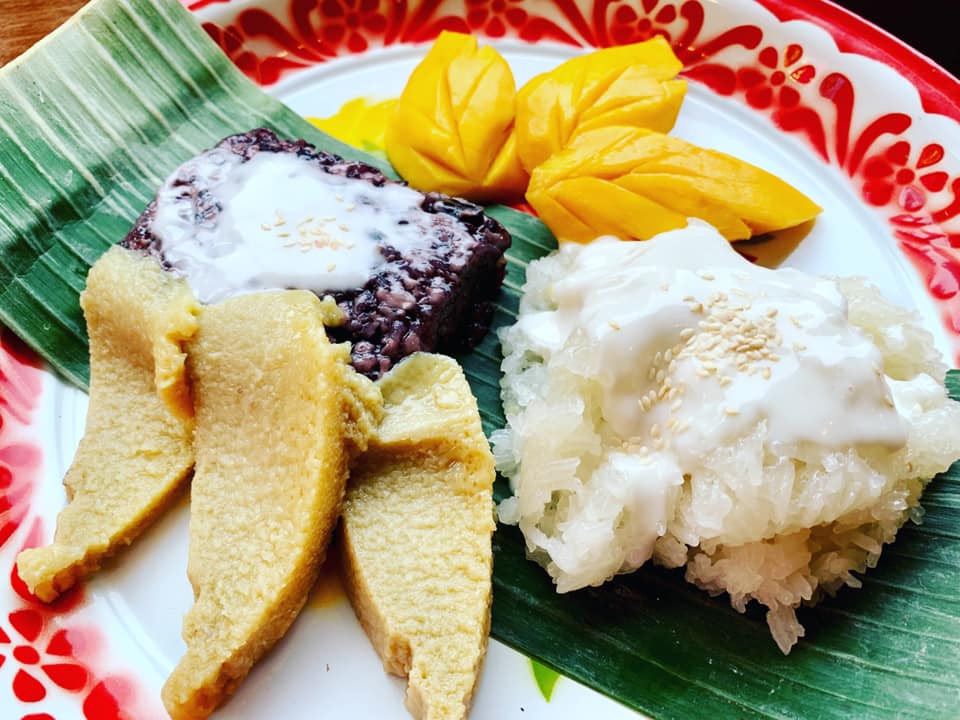By Nina Huang
NORTHWEST ASIAN WEEKLY
Thailand, historically known as Siam and officially known as the Kingdom of Thailand, is located in southeast Asia and is home to almost 70 million people.
From food, martial arts, fashion, to entertainment, Thai culture has influenced Americans in various and versatile ways.
The popularity of Thai food
Thai food is overwhelmingly one of the largest influences Thailand has had on American culture and society.
“People associate Thailand with Thai food,” said Pranee Khruasanit Halvorsen, chef and owner of I Love Thai Cooking .
She also mentioned that people sometimes are confused by Thailand and Taiwan and more education around that would be helpful as both have distinctly unique cultures and identities.
Having moved to the United States over 30 years ago, she has spent much of her career in the culinary arts. In fact, she taught at a kids camp last year and loved the experience of teaching about Thai cuisine to the younger generations.
She thinks pad thai and tom yum soup is the most common association that Americans have with Thai food. What people may not know about is the 1997 Asian financial crisis, also known as the “Tom Yum Kung.” Tom yum means sweet and sour and kung means shrimp.
Originating in Thailand, the crisis was the financial collapse of the Thai baht after the Thai government was forced to float the baht due to lack of foreign currency to support the exchange rate to the U.S. dollar.
In addition to pad thai, Marissa Vichayapai, a Thai American who is currently living in Bangkok, mentioned mango sticky rice as another popular Thai dish though it’s not inherently Thai.
“Interestingly, in Thailand, the most favorite dish among locals isn’t pad thai at all, but a meat and basil stir fry dish called pad ka pao. It’s really good with a fried egg and is extra delicious when spicy,” she said.
Thawarach P Jaicharoensook, who goes by Ott, co-owner of Thai restaurant Bangrak Market, said, “Food is a source of life. Food is essential to Thai culture and many cultures around the world. We are connected by the way we share, get together, party, express love, and build relationships within our friends, families, and communities.”
The reason he and his business partner started Bangrak Market was to pay homage to the spicy, flavor-packed food culture, as well as the opportunity to share the diversity of Thai food with the greater Seattle community.
“For Thais, we eat 24/7, and anyone who has visited Thailand can attest to that. We love to have fun and party,” he added.
That’s why his restaurant is open late because it’s a space where everyone can come together, explore new foods, and learn more about the vibrant diversity of Thai food across different regions while simultaneously having a great experience with friends.
Thailand’s influence on mind, body, and soul
Originally from Bangkok, Rattikorn “Nina” Intarakumhaeng moved to the U.S. in 2012 to pursue higher degrees in pharmaceutical science.
When she became a mom, Intarakumhaeng started her own clothing brand called “Mome” with unique clothes designed for nursing moms.
With fashion in mind, she said that the traditional Thai sarongs have made their way to Western culture as worn by people on beach vacations.
When she lived in Michigan, she noticed several gyms offering muay thai classes.
Muay thai is a Thai form of boxing that involves elbows, knees, and high kicks. Viyachapai mentioned that it’s aggressive, sweaty, and raw.
Thai massages have also made its way into American culture for those who love a good stress reliever. It’s a deep tissue massage with contortions that are meant to release tension and crack your joints and spine.
“It’s like getting beat up and feeling great afterwards,” Viyachapai added.
In addition, Intarakumhaeng mentioned that a lot of Thais are devout Buddhists and practice meditation and mindfulness. She thinks it would be beneficial for more people to have this sense of self-awareness and mindfulness that is largely part of Thai culture.
Thai entertainment
Vichayapai wants to introduce Thai entertainment to the American audiences.
“Thai romantic comedies are really good. It’s slapstick humor with super sappy scripts and often loaded with lots of odd-ball characters that make the movies endearing. Watching one is like getting stung by a love bug. It has the power to cure past wounds and will make you want to take your chances at love again,” she said.
On the flip side, she also thinks Thai horror movies are also cheesy good.
“Thai horror movies won’t leave you psychologically damaged and are meant to be fun. They get you buzzing from a lot of tension-filled suspense and their storylines are often a mix of wild twists and over the top scenes,” she said.
Exchange of respect
In addition to being a chef and cooking instructor, Halvorsen is also a tour leader in Phuket twice a year.
“Any footprint you leave behind is an impact. Do read about the country and culture before visiting and learn a few words like ‘hello’ and ‘thank you,’” Halvorsen said.
Another useful phrase is “mai pen rai,” which means “you’re welcome” or “no worries.”
“I also recommend people learn how to greet people in Thailand. Thai people will feel good when they see foreigners do the greeting and say, ‘sawadee ka,’” Intarakumhaeng agreed.
By putting in the extra effort and spending time doing research on Thai culture and customs, it helps open the door to exchanging cultures and builds mutual respect between both Thai and American cultures.
Nina can be reached at [email protected].




